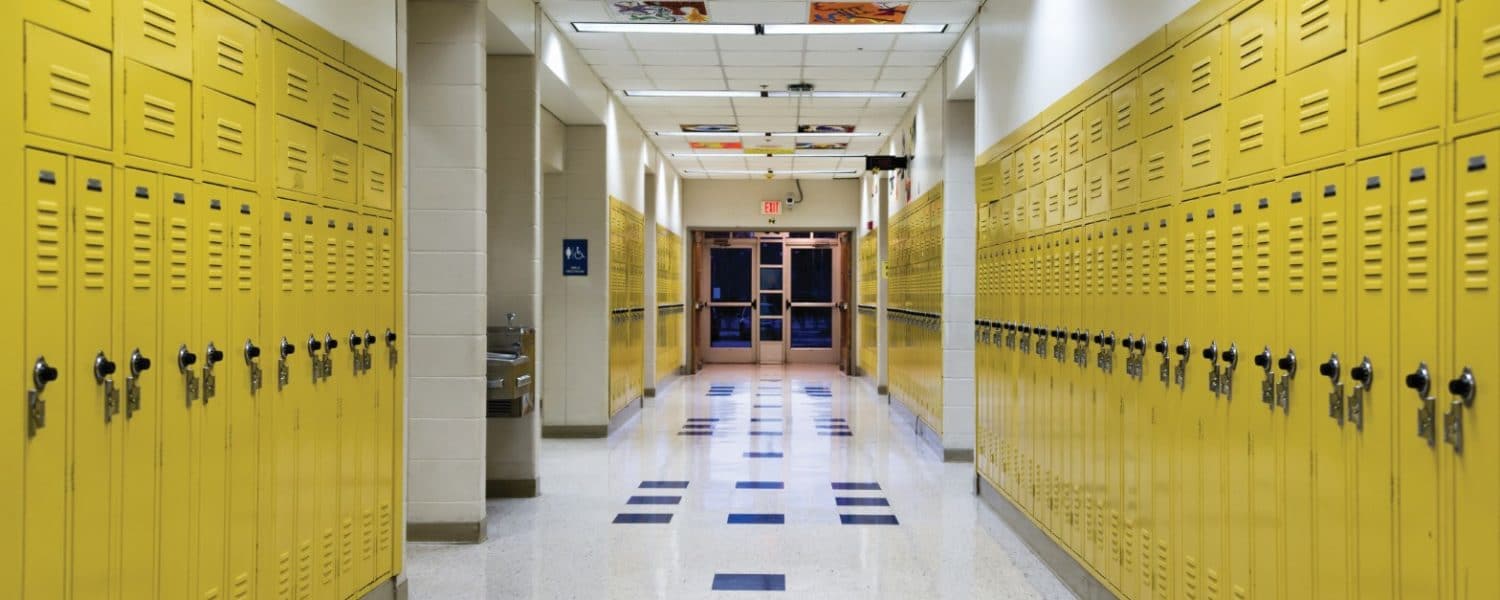By Tom Plaskota
As its name makes clear, resilient flooring is designed to hold up in demanding environments. Its durability and stain and water resistance make it a popular choice for busy – and potentially messy! – school spaces.
Historically, vinyl composition tile has been the most popular and most economical flooring choice for schools. However, resilient rubber tile has recently made inroads into the education industry.
Learn more about these materials and how best to take advantage of them in this guide.
Why
In general, resilient flooring can help installers meet the specific demands of school installations. Less expensive than traditional tile, resilient flooring is often more efficient to install. Resilient flooring helps stay within school renovation budgets, in terms of both time and money.
Vinyl Composition Tile
For many school installations, vinyl composition tile provides the perfect balance of affordability, durability, and style. It tends to have the lowest initial purchase price of resilient floorings and is available in a wide range of colors and styles – allowing designers to affordably create floors in custom school colors. It also resists wear and tear, which makes it perfect for heavily trafficked school corridors.
Resilient Rubber Tile
As its aesthetic possibilities expand, resilient rubber tile has become an increasingly popular option for schools. Although it can have a higher initial purchase price than vinyl composition tile, many rubber flooring materials have a “no wax” surface, which reduces their long-term maintenance costs.
Environmental factors have also contributed to rubber tile’s popularity. Many rubber tiles are composed of recycled tires, which can help schools fulfill sustainability goals.
Where
Vinyl Composition Tile
Because it typically can withstand both heavy wheel and foot traffic, vinyl composition tile is used all over schools – in hallways, cafeterias, and classrooms. Many brands offer vinyl composition tile with non-slip, non-scuff qualities, specifically designed for use in gymnasiums.
Resilient Rubber Tile
For a long time, rubber flooring was only available in black and only used in spaces where looks didn’t matter. However, because it is now available in a wide range of colors, rubber tile has found its way into virtually every educational environment.
Performance advances have also expanded its use. Before, rubber could not be used in commercial kitchens, as it soaked up grease and oil. But today, new rubber tiles repel grease and oil, so they can be used in cafeterias.
How to Select Adhesives for Resilient Flooring:
Anticipated traffic – both during construction and after installation – should influence your adhesive selection. If you will be working alongside other trades in the school, look for adhesives with a shorter open time and very aggressive grab to prevent the tiles from sliding when introduced to other trade traffic during the construction phase.
If a particular part of the school (for example, a cafeteria kitchen) will be subject to heavy loads in localized areas, consider a harder-setting adhesive like an epoxy or polyurethane. Epoxies and polyurethanes also offer exceptional moisture and chemical resistance and durability, helping them contribute to successful installations in demanding environments like schools.
Floor failures can be distracting and potentially dangerous for students and costly for school districts. With that in mind, consider environmental conditions when selecting your adhesive to help ensure its success.
Determine the relative humidity of the school’s substrate, and select an adhesive that will withstand it. Changes in moisture can lead to expansions and contractions of a floor. Look for an adhesive with the cured strength necessary to prevent gapping.
In addition to testing moisture levels, test your substrate’s porosity with the water droplet test. Place several drops of water, about the size of a dime, on the subfloor. If the water droplets penetrate the substrate within a minute, the substrate is porous. If they remain on its surface, it is nonporous. Make sure your adhesive is compatible with the substrate’s porosity, and consult its instructions for any installation considerations.
Schools may have particular adhesive requirements because of air quality concerns and sustainability requirements. Make sure your adhesive is approved for use if working in educational areas.
Like the flooring, the adhesive may contribute to the sustainability of a space. Look for adhesives with low or no VOCs for LEED compliance. The Carpet and Rug Institute’s Green Label programs set high standards for indoor air quality and designate the lowest emitting products on the market.
A student’s environment can shape their educational experience. Thanks to expanded aesthetic options and performance possibilities, a resilient flooring installation can be both functional and beautiful.
Tom Plaskota is technical support manager for TEC, a brand offered by H.B. Fuller Construction Products, www.tecspecialty.com.














